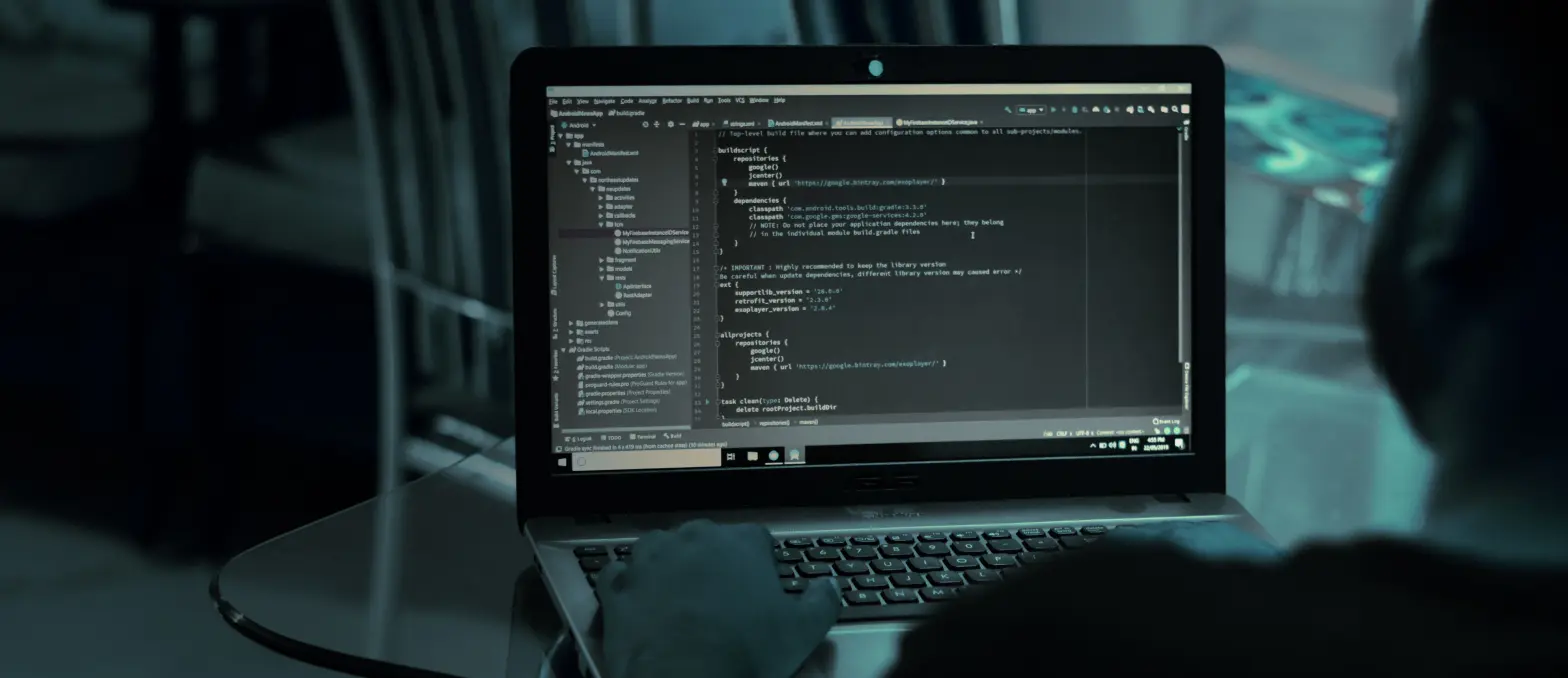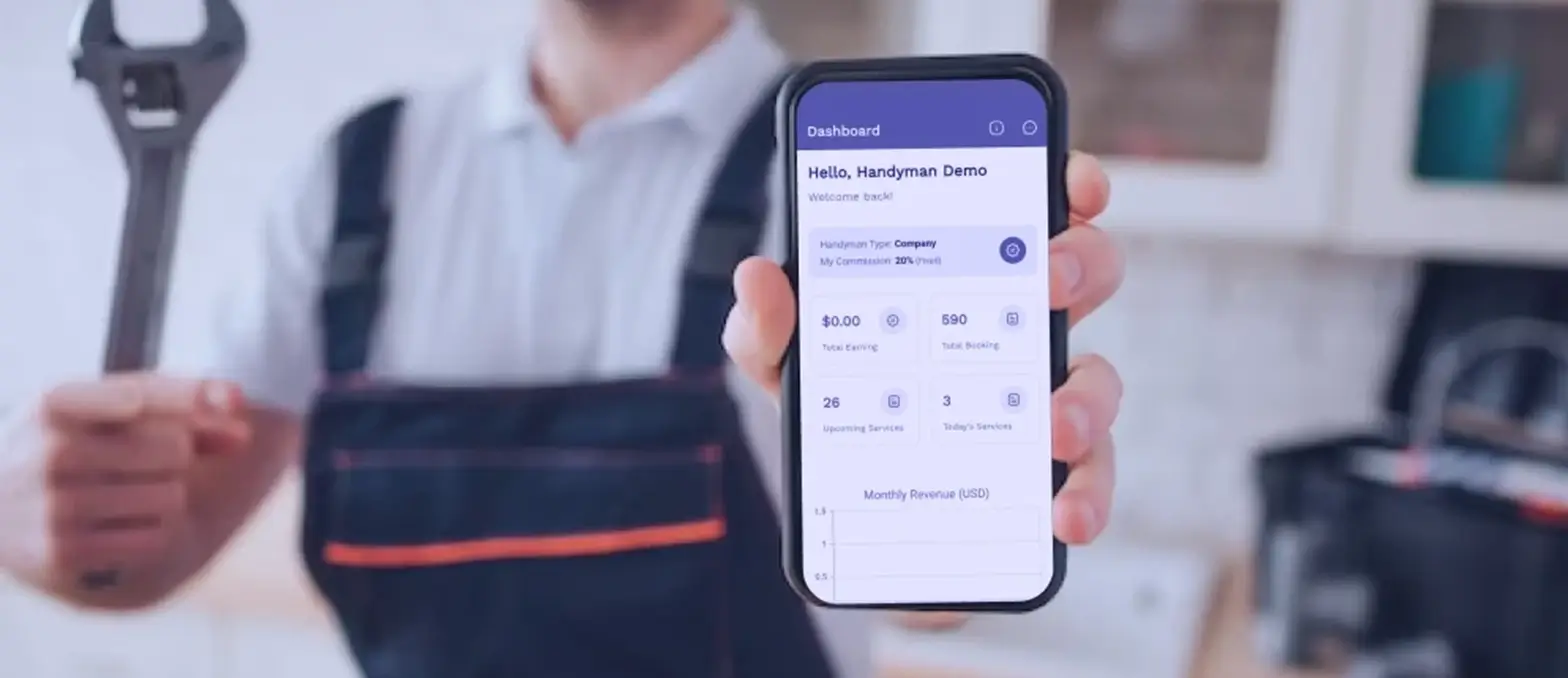In the thirty years since their inception, the Internet of Things (IoT) device market has grown in leaps and bounds. Annual revenue has now reached $251.6 billion USD and is projected to more than double that figure in the next seven years. Whether it’s an Apple Watch or the seemingly omnipresent tones of Amazon’s ‘Alexa’, IoT smart devices are here to stay: they’re part of how we live our lives now with the global number of connected IoT devices forecast to reach 30.9 billion USD by 2025.
Even with their popularity, a fact that can’t be denied about IoT devices is how frustrating it is when the corresponding apps leave a lot to be desired. It might the user-experience (UX) design and user-interface (UI) design or the reliability of the app itself — either way, when it goes wrong it’s very, very wrong. The problem deepens for users due to how much we now rely on IoT devices. The bottom line is that due to the ubiquity of IoT devices, good design and development for the supporting apps is paramount. As these apps are used for the devices they support, they now play a role in a range of everyday tasks and services in nearly everyone’s lives: home security, personal activity and leisure, augmented and visual reality, industrial services, healthcare, and much more. The market is growing at such a fast pace that developers can be rushed when designing apps while also being expected to devise a product that can be scaled up and adjusted depending on market demands. This is disappointing for users but also weakens the efficacy of the device because attention-to-detail in supporting apps makes the device better overall.
The potential for good mobile app development for IoT devices is obvious, however it’s compelling and even urgent to discuss how good mobile app development makes IoT devices even better.
In this article, we’ll explore the following areas of software features and cybersecurity tactics to improve IoT apps
- The UX & UI for IoT apps
- Managing mobile app development for different categories and niche areas of IoT
- Standout features of good mobile app development for IoT
- Overcoming cybersecurity risks through good app design
The UX & UI for IoT apps
First things first, the two pillars of mobile app design and development: user-experience and user-interface design. In everything humans use, there is a symbiosis between an interface and the overall use experience. This interrelationship is heightened in technology due to how much we rely on the design of an interface to inform how we navigate and ultimately utilize the product. In a blog for LinkedIn, Brijesh S. pinpoints the critical and technical role of good UX and UI. They say, “An excellent user interface instantly creates an attraction for your app, while a splendid user experience will provide a lasting impact on your user’s mind.”
Irrespective of App Store or Google Play reviews for the app, the real indicator for IoT companies is whether people keep using a product if the app is bad. From the outset — and regardless of the quality of the product — mobile app developers have so much riding on their shoulders if users are going to be happy with an IoT device. The business value of technology’s UX and UI is significant with McKinsey finding that on average 24-25 percent of all high-tech applications fail. This is more explicitly analyzed in another McKinsey article The Business Value of Design written by Benedict Sheppard, Hugo Sarrazin, Garen Kouyoumjian, and Fabricio Dore.
“We live in a world where your smartphone can warn you to leave early for your next appointment because of traffic, and your house knows when you’ll be home and therefore when to turn on the heat,” They report, “The boundaries between products and services are merging into integrated experiences.” People expect even more of their IoT apps due to the scope of use which is why, as Stanislav Zadvornyy maintains, “To manage such a complex system and ensure the commercial success of an IoT solution, a strong intuitive design and easy-to-use interface of an application is a must-have.”
Managing mobile app development for different categories and niche areas of IoT
Pressure on mobile app developers for UX and UI compounds again as the IoT market sustains its monumental expansion. On a macro level, there are three main groups of IoT devices: Consumer, Enterprise, and Industrial. For general discussion, this article focuses on the Consumer group of devices although there are often overlaps between them such as when smart building devices are used in both personal and industrial settings or as with the rapidly expanding area of mHealth devices and apps.
As the market expands, there are thousands upon thousands of devices, with these now including the following broad categories that can also overlap:
- Wearable technology — such as fitness devices, smart watches, and wireless and bluetooth headphones
- Entertainment and recreation — such as home media centres, smart televisions, and drones
- Appliances — such as smart thermostats, light control, and refrigerators
- Communications — such as smartphones
- Transport and travel — such as GPS systems and smart luggage travel tags
- Surveillance and security — such as smart locks, motion sensors, and remote video systems
Within these categories, there is considerable variation depending on how robust a device needs to be, the role the brand envisages an app having in its use, if the app functions as an API for use e.g. in order to be able to access remote data with home security, and even if there are going to be multiple users accessing the device.
UX and UI varies so much and with so many brands relying on these apps to troubleshoot, provide customer service, gather user data, and seamlessly stay connected to a range of devices, mobile app developers are tasked with engineering software for the multifaceted demands of IoT products which varies considerably compared to other common software including web applications or even other everyday apps. Manik Arora illuminates this in terms of how, “In contrast, for IoT devices, the standard structures and experiences of applications might not always be present, because these devices support both human-machine interactions and interactions among a variety of IoT devices.” It is therefore paramount that mobile app developers have a thorough understanding of everything required on a functionality level so this can be integrated into the UX and UI conceptualization and development — this actually starts with the product developers and owners. Their role in the production phase, should be focusing on and prioritizing the assessment of user needs, product design, and testing from the outset so any issues are identified and resolved well before launch: it shouldn’t fall solely on the shoulders of the mobile app developer.
Standout features of good mobile app development for IoT
For mobile app developers to achieve these diverse software demands, there are overriding features of good IoT mobile app development for optimal UX and UI. Far from being basic, these are core principles that can be used to structure design and underpin coding.
UX and UI features to include in every IoT mobile app:
- Simple design — think easy-to-use designs to mitigate confusion. This design will also speed up loading time, another bugbear of every user — especially because IoT devices largely require the internet to operate.
- Standard elements — to help users with learning the interface and negotiating unconscious patterns of navigation; developers should replicate these across platforms where the device can be accessed including both mobile app and web versions.
- Accessibility features — customization and personalization influence UX massively. In terms of inclusivity and individual preferences, both design and content need to be tailored to the user; Forrester reports that 89 percent of digital businesses are investing in personalization.
- Location flexibility — makes IoT even more user-friendly. Bringing in all the location features of IoT apps will now need to incorporate wifi, GPS, cell tower, and even satellite (e.g. Starlink). This particular feature also helps gather data to make the long-term UX even better.
- Robust user access — user access is valuable to everyone. Designing an app that can function as a remote control is applicable for everything from a smart doorbell to bluetooth headphones. Also, making it possible for multiple users to onboard then access the device without disrupting any one person’s control is much more satisfactory than clunky conflicts between users.
- Aesthetically elegant design — in line with accessibility, using uniform fonts and a well-tested color palette is key to both the conscious and unconscious UX across all iterations of the mobile app, tablet, and web versions. This should integrate with accessibility within the simple design so that users can access and focus on getting what they need from the app.
- Clear data access — as with aesthetics and simplicity, data presentation must be completely user-centric. This should enhance their UX and justify the investment in the product. Smooth and streamlined data representations should be effortlessly retrievable, accurate, and offer immediate utility for the user.
- Effective communication — the right balance between useful push notifications and data sharing versus nonstop disruptions. Consider battery life notifications, custom sounds for different reminders, and clear settings to make it easy for users to choose which communication features and alerts work best for them.
- Security — the volume of data handled means that a highly secure UI is in place without affecting the UX. The additional access points between connected devices, networks, and location information complicated the security needs even further. Adaptable and flexible interfaces should be functional while also being easy to secure.
- Consistency — incorporating seamless functionality between each app section is an essential part of a positive navigation experience. As a building block of the UX/UI balance, this ensures that each section of the mobile app will be comprehensively cohesive.
Overcoming cybersecurity risks through good app design
IoT devices pose a wide spectrum of cybersecurity risks that can’t be ignored when we are reviewing app development. The now-exponential threat of cyberattacks via IoT points is substantial and can have a swift cascade effect in both the digital and physical world. According to Zscaler, IoT cyberattacks have increased 700 % since 2019 with Irdeto reporting that a cyberattack on an IoT device costs an average of $330,000 USD in damages. The vast amounts of data shared, the sensitivity of information that’s easily accessed via these networks, and the number of people that can be targeted is substantial. It’s also happening on a global scale — in fact Purplesec estimates that all over the world, on average, IoT devices are typically attacked within five minutes of connecting to the internet.
Attacks tend to happen via the follow risk points:
- Location data — creates a personal vulnerability from an actor seeking to harm or take advantage of users
- Network access — unsecured networks the IoT device connects to can then be accessed for bot attacks
- Data access — data of all types (financial, private, assets) that can be sourced via networks
- Physical breaches in commercial and private locations — users can be located and targeted.
The way that IoT devices pose major risks to cybersecurity — most often they are a backdoor to home networks and sensitive user data like personal financial information or cryptocurrencies — means that mobile app developers can play a part in improving overall security.
This can be classified by:
- Secure infrastructure — e.g. requiring multi-factor authentication to access the device
- Educational infrastructure — e.g. prompting the user to change passwords for secure versions
- Connecting infrastructure — e.g. incorporating privacy settings into the location data
While mobile app developers cannot directly change how users behave during usage, when it comes to the designing of IoT apps they can nurture better digital hygiene in relation to the device, and perhaps their entire network of devices. On a more meta level, certain niches of IoT that rely on apps for functionality have an explicit crossover between physical/locational security and digital security, with one of profound risk: property security. This IoT niche can actually be the point where the cyberattack and physical attack occurs due to the growing market of IoT security solutions. The World Economic Forum emphasizes the dangers in terms of their seriousness, “Hacking the location data on a car is merely an invasion of privacy, whereas hacking the control system of a car can become a threat to life.”
One example of these attacks that is of note as a fast-growing risk area is the Consumer IoT category of home security devices. Gartner reported that in 2021 this category of IoT accounted for $631 million USD in IoT worldwide sales. These home security devices now make up so much of the overall home market of personal security as people switch to protecting their premises with smart locks, video door bells, home surveillance systems. This then creates a wide-reaching cybersecurity vulnerability. Savvy and opportunistic criminals are using these devices as the starting point for sophisticated attacks that drive chaos and cause substantial damage to victims. While this is difficult to manage, one area that app developers could assist is in terms of helping to promote good digital hygiene and data-driven privacy awareness for users. App features in home security IoT devices that flag any cyber risks could include identifying network vulnerability and device vulnerability, as well as prompting users to secure their data on all connected devices.
Conclusion
In closing, it can’t be denied that there is a struggle with UX and UI that exists in all areas of mobile app development— not just those working on an IoT product. Even so there is a lot riding on their shoulders in this market. Writers explained -“Because IoT platforms are typically complicated and managing multiple objects, devices, and systems, the design must have unifying aspects that allow users to easily traverse the numerous functionalities of each linked item.” As a baseline, getting users familiarized with the flow of the interface will make the device use even better which can also increase the odds of their satisfaction with the product. While there is a responsibility on the part of the developers to get the app design right, the overall collaborative synthesis between the software developers and hardware designers is what makes the ultimate product that can win users over by every single customer satisfaction metric with the end benefit of solid cybersecurity, too. No matter what an exceptional experience is always the goal of user-centric software and inseparable from how IoT products are becoming omnipresent in our lives, workplaces, and global infrastructure.












